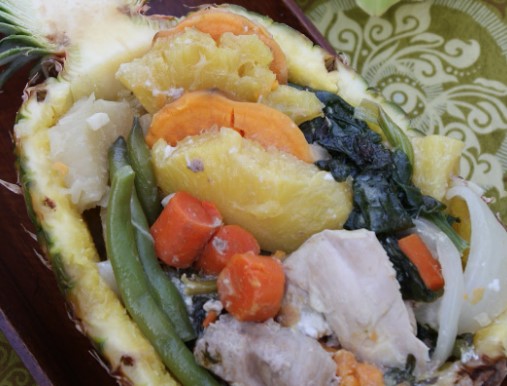Introduction: Papua New Guinean Cuisine
Papua New Guinean cuisine is a diverse blend of local and international influences, reflecting the country’s rich cultural history. The cuisine is characterized by the use of fresh, seasonal ingredients, blending traditional ingredients with modern techniques to create unique flavors. The country’s cuisine is heavily influenced by its geography, with a diverse range of ingredients available from the tropical rainforests, highlands, and coastal regions.
Unique Ingredients in Papua New Guinean Cuisine
Papua New Guinean cuisine is known for its unique ingredients, many of which are not found in other parts of the world. Some of the most notable ingredients in Papua New Guinean cuisine include sago, betel nut, taro, and coconut.
Sago: The Staple Food
Sago is a staple food in Papua New Guinean cuisine, made from the pith of the sago palm. The pith is extracted from the trunk of the palm and processed to form a starchy flour. Sago is often used to make a type of porridge or pudding, and is also used to thicken soups and stews. Sago is a versatile ingredient that is high in carbohydrates and provides an important source of energy for the local population.
Betel Nut: A Popular Stimulant
Betel nut is a popular stimulant in Papua New Guinean culture, and is often chewed along with other ingredients such as lime and tobacco. Betel nut has a mild stimulant effect, and is often used in social situations as a way of promoting conversation and relaxation. However, the use of betel nut has been linked to a range of health problems, including oral cancer and addiction.
Taro: A Versatile Root Crop
Taro is a versatile root crop that is widely used in Papua New Guinean cuisine. Taro is rich in carbohydrates and provides an important source of energy for the local population. It is often boiled or roasted and served as a side dish, or used to make a type of pudding. Taro leaves are also used in cooking, and are often wrapped around other ingredients to create a type of dumpling.
Coconut: A Multi-Purpose Fruit
Coconut is a multi-purpose fruit that plays an important role in Papua New Guinean cuisine. Coconut milk is often used as a base for sauces and soups, while coconut oil is used for cooking and as a cosmetic ingredient. The flesh of the coconut is used in a variety of dishes, including curries and desserts, while the shell is used as a container for serving food and drink.
In conclusion, Papua New Guinean cuisine is renowned for its use of unique and diverse ingredients that reflect the country’s rich cultural heritage. From sago to betel nut, taro to coconut, these ingredients are an important part of the local diet and have played a significant role in shaping Papua New Guinean cuisine.

